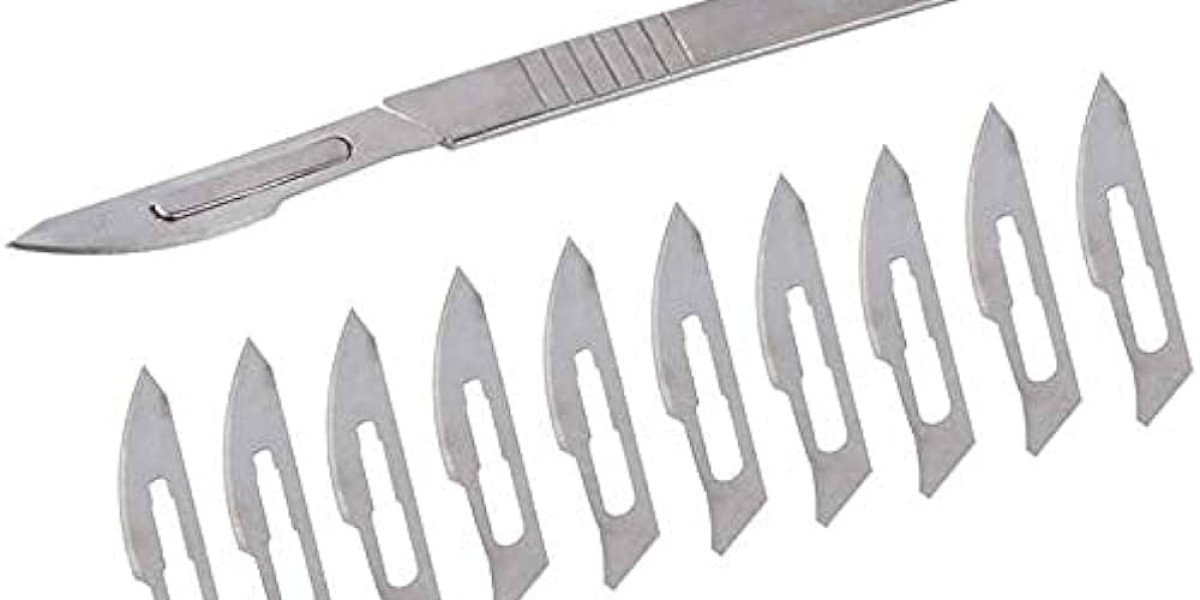The surgical blade is a critical tool in the operating room (OR), indispensable for making precise incisions during surgery. However, the handling of these blades comes with significant risks if not done correctly. Ensuring sterility and maintaining safety are paramount in preventing infections and accidental injuries. This article outlines the best practices for handling Surgical Blades in the OR, emphasizing both sterility and safety to protect patients and healthcare workers alike.
Importance of Sterility in Handling Surgical Blades
Maintaining a sterile environment in the OR is essential to prevent postoperative infections. Surgical blades, like all surgical instruments, must be sterile before use. Any lapse in sterility can introduce pathogens, which may lead to serious infections, including sepsis or surgical site infections (SSIs).
How Sterility is Achieved
Surgical blades are typically sterilized using high-temperature steam, chemicals, or gas sterilization processes. They are then packed in sterile packaging to ensure they remain free from contaminants until used. Healthcare professionals must adhere to strict protocols for handling these blades, ensuring they do not become contaminated when opened or transferred onto the surgical tray.
Best Practices for Sterility in Handling Surgical Blades
1. Proper Storage
Surgical blades should always be stored in their original, sterile packaging until the moment they are needed. These blades should be kept in a controlled environment, free from dust, moisture, and contaminants. The storage area should also be organized in a way that prevents any tampering with the packaging, reducing the risk of accidental contamination.
2. Opening Sterile Packaging
When removing a surgical blade from its sterile packaging, it is crucial to follow the correct procedure. Only individuals with sterile gloves should handle the blade, and the blade should never come into contact with any non-sterile surface. Opening the packaging over a sterile field or using sterilized instruments to transfer the blade onto the tray minimizes the risk of contamination.
3. Using Sterile Gloves and Equipment
To maintain sterility, all members of the surgical team must wear sterile gloves when handling surgical blades. Any item that comes into contact with the blade, such as forceps or blade handles, should also be sterile. If at any point sterility is compromised, the blade must be discarded, and a new sterile blade should be used.
Safety Measures in Handling Surgical Blades
In addition to maintaining sterility, safety is another critical aspect of handling surgical blades in the OR. These blades are extremely sharp, and improper handling can result in accidental injuries to the surgical team, including cuts, punctures, and exposure to bloodborne pathogens.
1. Safe Handling and Passing Techniques
A key safety principle is ensuring that surgical blades are passed between team members in a manner that reduces the risk of injury. The "hands-free" technique, where the blade is placed in a neutral zone and not directly handed to another team member, minimizes the likelihood of cuts. If passing directly, the blade should be passed with the sharp edge away from the receiving person.
2. Proper Disposal of Used Blades
Used surgical blades should be disposed of immediately after surgery in designated sharps containers. These containers must be puncture-resistant and clearly marked, ensuring that used blades are safely contained and do not pose a risk of injury. Healthcare workers should never attempt to re-sheath or manually handle used blades, as this can increase the risk of needlestick injuries.
3. Regular Training and Competency Checks
Regular training is essential for all operating room personnel to ensure they are familiar with the latest safety protocols for handling surgical blades. Competency checks, including practical demonstrations of correct blade handling techniques, should be conducted regularly to ensure compliance. Simulation-based training, which allows for hands-on practice in a controlled environment, can be particularly effective in reinforcing safe practices.
Infection Control and Preventing Surgical Site Infections (SSIs)
Sterility and safety go hand in hand in reducing the risk of SSIs. A comprehensive infection control program is critical to ensuring that sterile techniques are maintained at all times during surgery. This includes ensuring that all surgical instruments, not just blades, are properly sterilized, as well as maintaining a sterile field throughout the procedure.
1. Monitoring the Sterile Field
The sterile field must be continuously monitored during surgery to ensure that it is not compromised. If a breach in the sterile field occurs—such as a blade accidentally touching a non-sterile surface—the surgical team must immediately take steps to rectify the situation, which may include replacing contaminated instruments or restarting the procedure with fresh, sterile equipment.
2. Personal Protective Equipment (PPE)
All surgical team members must wear appropriate PPE, including sterile gowns, gloves, masks, and eye protection, to prevent the spread of infections. Gloves must be changed frequently, especially if they come into contact with non-sterile surfaces or are damaged during surgery.
Common Mistakes in Handling Surgical Blades and How to Avoid Them
Despite rigorous protocols, mistakes in handling surgical blades can still occur. Some of the most common mistakes include:
Touching non-sterile surfaces: Healthcare workers may inadvertently touch non-sterile surfaces with the blade or their gloves, compromising sterility. To avoid this, team members should remain vigilant and mindful of their actions in the OR.
Re-sheathing blades: Attempting to manually re-sheath a blade is dangerous and can lead to cuts or punctures. Always use designated sharps containers for disposal.
Improper glove changes: Failing to change gloves after contamination increases the risk of infection. Gloves should be changed regularly and anytime sterility is in question.
Conclusion
Maintaining sterility and safety in the operating room is crucial to protecting both patients and healthcare workers. Surgical blades, while essential for precise surgical procedures, pose significant risks if not handled correctly. By adhering to best practices, including proper storage, sterile handling, safe passing techniques, and prompt disposal, the OR team can significantly reduce the risk of infections and injuries. Regular training, attention to detail, and a culture of safety are key components in ensuring the success of these practices.









